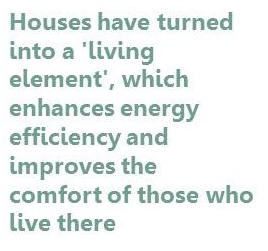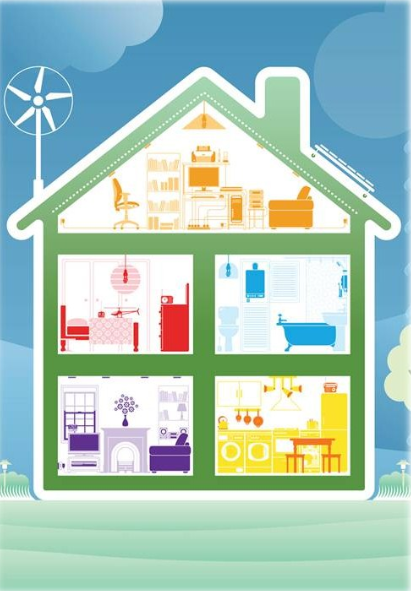The title might suggest a classical scenario inside a horror movie: some people, typically a group of teenagers, enter inside a derelict house that seems to be alive, and is the cause of many troubles that, depending on the script, could end up dooming them all.
In the real world exist those houses that, far from the evil intentions of their homonymous movie ones, communicate with the users, sometimes directly, sometimes in a subtle way, with the dwellers not being conscious of it.
Traditionally, the behaviour of the buildings have been like passive elements, that is, having features completely dependent both on the users’ handling and the equipment integrated on them (heating and air conditioned, electric power, plumbing and water, and recently telecommunications). This way the traditional buildings were conceived and existed with certain predetermined features and goals: people using the building enjoyed (and suffered from) the working status of the facility, and only a few parameters of these buildings could be modified with the direct intervention of the user or the administrator/maintenance crew.

It is not always clear if the progress of the technologies or the ideas to implement them are going ahead or following one to another, but it is true that the enhancements in the characteristics of the equipment installed into the buildings and the reduction of their sale prices to reasonable levels for the average user have taken to achieve, at global level, the change from the traditional passive dwelling to another active. But, what is the concept of active dwelling?
First of all, it is necessary to clarify that there are two general accepted concepts called Active House and Passive House (or PassivHaus in the original German concept), but using the concept at energetic level, that are referred, in the first case, to the traditional home, and in the second case to the house that, without any support from devices that consume energy, is able to keep certain environmental and comfort parameters to satisfy the final user. Here we are redefining the Active House in terms of interactivity at a energetic level with the user, where the dwelling “talks” to the user: it receives the requests and needs from the people using the building, and is able to make an intelligent management of its own resources and mechanisms (heating, lighting, etc.) in order to satisfy those requests and needs, generating an appropriate level of comfort for each case.
Nowadays there are solutions for these Active Houses (although Interactive Houses would fit better) that combine three fundamental elements when running these kind of houses: sensors and interfaces, control networks and equipment. The first ones are the senses of the system, and gather the current data of the environment and the needs of the user.

Next, the networks join together, like the body circulatory system, all the elements from the system, including the communications between them. And finally the equipment, that execute the actions necessary to fulfil the needs.
The sensors have evolved in price and performance to the point of being able to be used in private homes, and their future will see technological enhancements and reduced prices, as well as easiness in installation and maintenance.
About the networks, there are some manufacturers and consortiums with their own designed protocols, and the tendency for these cases is that only a few would survive, then simplifying the process to generate the network, along with the costs and maintenance.
Considering the equipment, this is progressively adapted along with the current needs, offering new possibilities in comfort, and enhancing the building energy efficiency. It can be commented that CARTIF is actually working on a relatively new concept called BEMS (Building Energy Management System) that would comprise the former elements. This is a concept being developed by some R&D centres in order to manage the Active Buildings as a whole, including many concepts like the Internet of the Things, neural networks and fuzzy logic for modelling prediction, decision making and so on. This is a concept that we will develop in future blog entries, due to its special interest in the social and scientific fields.
As a conclusion, it has to be commented that the paradigm of home management has evolved to the point of change it into a living element that interacts with us, and that provide us, in a clever way, all the comfort and energetic management that we need.
- Maps, a window to knowledge - 14 October 2022
- Management system to save money on the home energy bill - 1 March 2016
- The talking house - 2 February 2016
